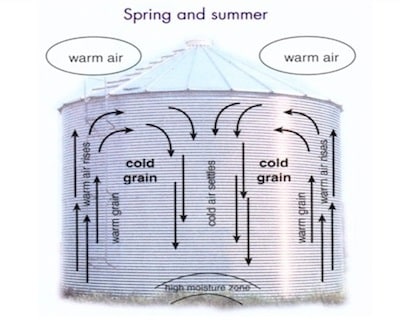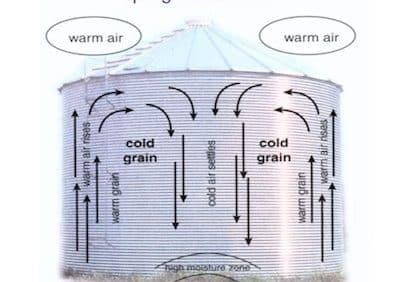While weather shifts from winter to spring, growers will want to check bins. Extended moments of warmer weather in winter can increase air and moisture movement inside bins, possibly unsettling stored canola.

As we exit the winter period of really cold days, growers may wonder whether running fans on cold days to substantially drop the temperature of stored canola is worthwhile?
This is not a researched scenario, but we asked grain storage researcher Joy Agnew of PAMI for her thoughts. She says:
Observations below are based on anecdotal and testimonial information and a bit of data. It’s hard to have a scientifically sound answer to every grain storage related question.
The main drawback with supercooling is the potential for the grain to “set up” – or get so cold it won’t flow. This can be a problem if the farmer needs to move it before it warms up. Plus, warming it up from this very cold state can take awhile since it’s difficult to get a decent, uniform airflow through a frozen grain mass and waiting for ambient warming will take several months. But the temperature at which this “set up” happens is pretty low, especially for dry or over-dry canola. My experience is that canola with moisture content of 9% or lower still flows even when the temp of the grain is -25°C. The other drawback is that, if the grain was still slightly tough, frozen tough grain is difficult to dry with natural-air drying. But freezing tough grain is a good way to minimize the risk of spoilage if there is no way to dry it in the fall. So there’s a tradeoff there. So, yes there are some downsides, but the benefit of more stable storage throughout the winter months probably outweighs them.
Further reading:
How to check bins.
How outside temperature influences moisture migration in bins
“Storage risk” article in Canola Digest
Tough or damp canola: Storage risk (Lots more good links at the bottom of this article.)
